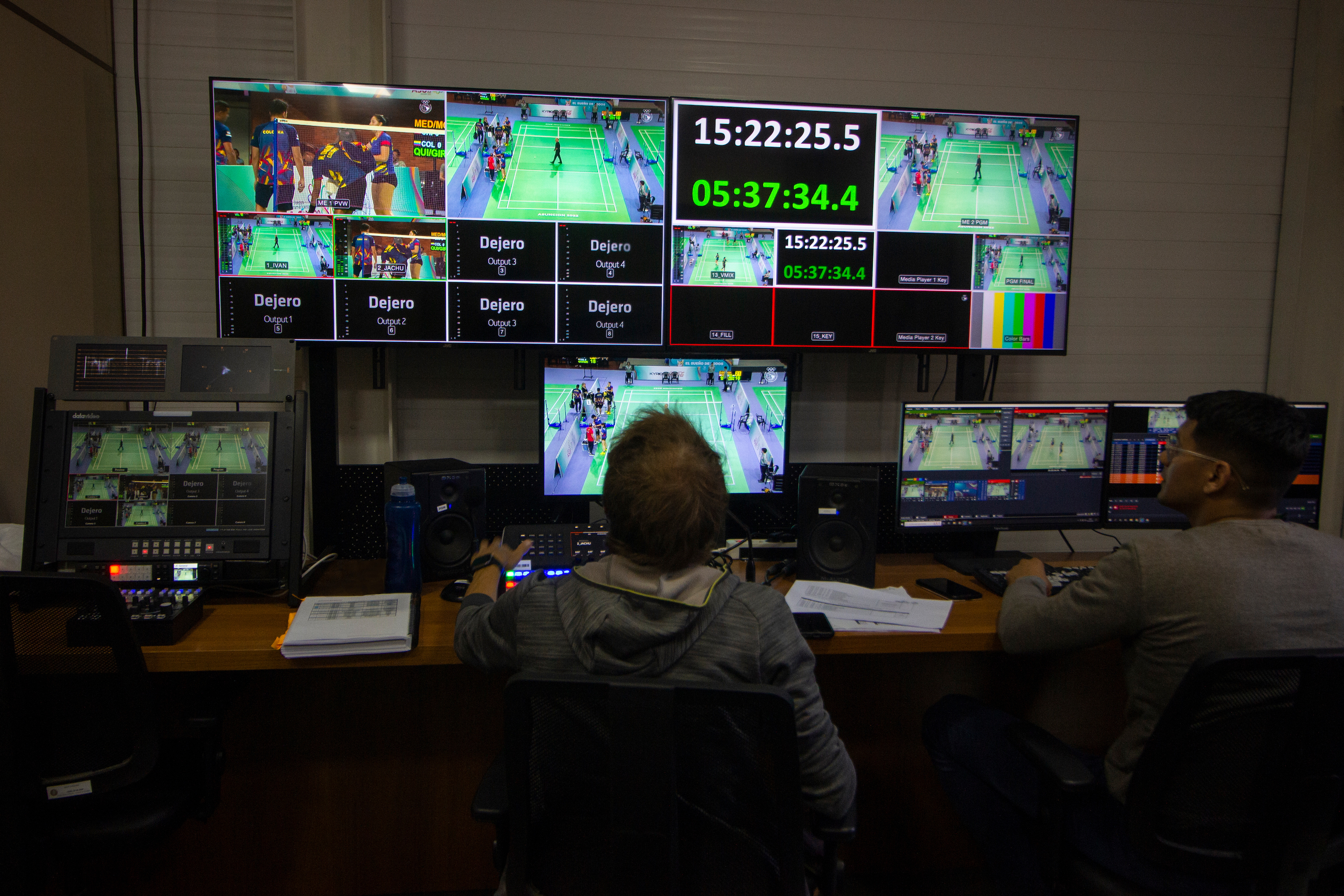XII South American Games Tap Dejero for All-Remote, Multisport Production
Madrid-based host broadcaster Quality said using the Dejero solution saved them $2.5M

ASUNCION, Paraguay—Dejero was instrumental in helping pulling together an all-remote multisport production during the XII South American Games.
Dejero supported the Madrid-based international broadcast production company Quality, which served as leading international production company and joint host broadcaster of the Games, held this year in Asunción, Paraguay, Oct. 1-15. Covering more than 4,500 athletes in 53 sports, the broadcaster deployed more than 90 cameras to capture live sports in various arenas and locations across the capital city.
By using Dejero at multiple locations—including at the venues in Asunción, within the International Broadcast Center and in Quality’s Buenos Aires hub—the production company was able to create a remote production workflow that amounted to a net present value saving of approximately $2.5 million, said Pablo Reyes, chief production officer at Quality.
“If you think about our all-remote workflow compared to a traditional multi-OB truck setup for a large-scale sports production like this, we’ve curtailed the movement of around six tons of extra material and 40 people—not to mention the installation of hundreds of kilometers of cable that would usually be required. The time and cost saved on logistics, resources and time is monumental.”
Reyes said the setup is the first multisport, entirely remote production of this scale.
Each camera at the Games was connected to a Dejero EnGo LTE mobile transmitter that used Smart Blending Technology to dynamically manage fluctuating bandwidth, packet loss and latency differences of individual connections in real-time to simultaneously combine multiple IP connections. During the event, the transmitters blended a combination of fiber at the venues and 4G cellular connectivity from diverse local network providers to form a virtual network of networks, the company said, and achieving average upload speeds of 20 Mbps.
Dejero EnGo mobile transmitters transported feeds from fixed sports venues and roaming cameras across the city to 23 Dejero WayPoint receivers located at the IBC in Asunción. Ten additional WayPoint receivers located at Quality’s Buenos Aires hub, reconstructed and decoded video feeds, which were then entered into a matrix to be shared with the switcher and replay systems, the company said. Packaged content was uplinked via satellite for distribution to rights-holding broadcasters and inserted into an ingest system for logging and clipping.
The professional video industry's #1 source for news, trends and product and tech information. Sign up below.
For events over longer distances—events like rowing, canoeing, cycling and the marathon—the connectivity that the Dejero EnGo provided allowed the production team to produce programming without using radio links, Reyes said.
“It would be impossible to cover several sports in one day with one or multiple OB vehicles because of cost implications and physical distances,” Reyes said. “The flexible remote production workflow means that cameras are not tethered to OB vans and can easily be moved from one venue to the next.”
The event has been seen as a milestone in Paraguay's audiovisual history, Reyes said. “People on the street are so enthusiastic about the quality of the signal we are producing. Meanwhile, the rights holders are complimenting the image quality and signal production every day—and the feedback from the networks has been fantastic.”
Susan Ashworth is the former editor of TV Technology. In addition to her work covering the broadcast television industry, she has served as editor of two housing finance magazines and written about topics as varied as education, radio, chess, music and sports. Outside of her life as a writer, she recently served as president of a local nonprofit organization supporting girls in baseball.

